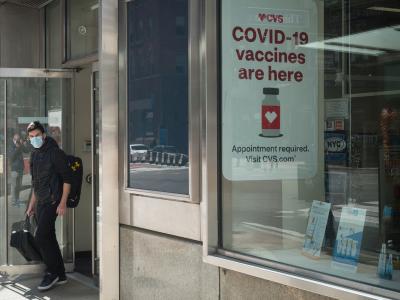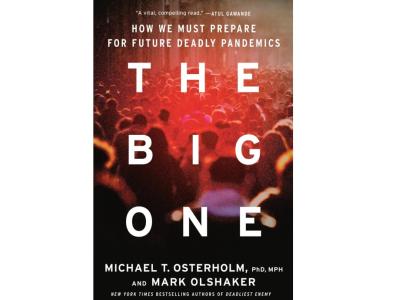At least 9% of COVID-19 patients readmitted within 2 months, study finds
In a Mortality and Morbidity Weekly Report (MMWR) study today, data from the Premier Healthcare Database showed that, of 106,543 patients who survived after being admitted for COVID-19 from March through July, 9,504 (8.9%) were readmitted to the same hospital within 2 months of discharge for any condition, infectious disease–related or not.
Indeed, 1,667 (1.6%) of patients recorded more than a single readmission within this timeframe.
Same-hospital readmissions occurred more often among patients discharged to a skilled nursing facility (15% return rate, 1.4 odds ratio [OR]) or home health organization support (12%, 1.3 OR) as opposed to those who were discharged to home or self-care (7%). Other factors that increased readmission likelihood included chronic conditions (1.2 to 1.6 OR), those who had a prior hospitalization within the last 3 months (2.6 OR), or those who were 65 years or older (1.2 to 1.4 OR).
The most common reason for readmission was infectious or parasitic disease such as COVID-19 (45%), but 11% reported circulatory diseases and 7% reported digestive diseases. White people were most likely to be readmitted, but no possible reasons for this are offered by the study.
"Understanding frequency of, and potential reasons for, readmission after a COVID-19 hospitalization can inform clinical practice, discharge disposition decisions, and public health priorities, such as health care resource planning," the Centers for Disease Control and Prevention (CDC) researchers write.
Study limitations include how patients and their diagnoses were coded, how COVID-19 sequelae is not fully integrated into data interpretation, how patients may not have gone to the same site for prior hospitalizations or readmissions, and how readmissions after 2 months were not included.
Nov 9 MMWR study
Shortages, lack of clear guidance hinders COVID-19 care providers
A new JAMA Network Open study found that institutional planning efforts failed to anticipate a number of challenges faced by frontline clinicians treating COVID-19 patients, leading to difficult allocation decisions and a lack of clarity regarding acceptable standards of care.
The researchers interviewed 61 US clinicians in 15 states from Apr 9 to May 26 who had cared for COVID-19 patients and were involved in planning institutional responses to potential resource limitations. The participants were mainly attending physicians who practice in large academic centers and representing areas that were hardest hit with COVID-19 cases at the time of the interviews.
Clinicians described a variety of resource limitations that severely compromised care, led to difficult bedside decisions, and took a significant emotional toll on providers, even in the absence of formal declarations of crisis capacity.
While providers described feeling strong institutional support for their efforts to develop protocols, many acknowledged the challenges and moral weight of adapting existing guidelines to resource limitations. Developing triage algorithms was a particularly weighty task, with clinicians describing explicit attempts to avoid bias by minimizing information about individual patients when making decisions.
Clinicians identified resource limitation (dialysis machines, staff, routine supplies, etc) as a source of frustration, as well as feeling unsupported. Some reported unorthodox attempts to obtain healthcare equipment through personal contacts or by fabricating it themselves.
The authors highlight the need to develop guidelines, protocols, and defined standards of care in advance of crises. Greater collaboration is needed between triage team members and frontline clinicians, as well as bioethics training for clinical teams navigating the conflicts of resource limitation, they wrote.
"Expanding the scope of institutional planning to address a broader spectrum of resource limitation may help to support clinicians, promote equity, and optimize care during the pandemic," the authors wrote.
Nov 6 JAMA Netw Open study
More data for no hydroxychloroquine benefit in hospital COVID-19 patients
The results of a robust, randomized clinical trial today show no benefit for hospitalized COVID-19 patients treated with hydroxychloroquine. The latest in a series of studies of the drug, the JAMA study shows no significant improvement in clinical status for COVID-19 patients at day 14 and no benefit over placebo.
Early enthusiasm for the use of hydroxychloroquine stemmed from in vitro studies showing that it might limit viral entry into human cells and reduce inflammatory factors, as well as a small observational study in March. Widespread availability of the drug and a history of safety based on its use as an anti-malarial and rheumatologic treatment added to the drug's early appeal. Many high-quality studies since have found no benefit for hospitalized patients.
Today's study of 479 COVID-19 ethnically and racially diverse patients at 34 US hospitals included rigorous monitoring for safety and adverse events. Patients were assigned to hydroxychloroquine (242) and placebo groups (237), with treatment participants receiving 400-milligram (mg) of hydroxychloroquine twice daily for two doses, then 200-mg twice daily for eight doses. The primary outcome was clinical status at day 14, measured on a 7-point scale ranging from 1 (death) to 7 (discharged and performing normal activities).
Study authors found no significant difference in clinical status between the hydroxychloroquine and placebo groups (mean clinical status score of 6 for both groups [4 to 7]; odds ratio [OR], 1.02; 95% confidence interval [CI], 0.73 to 1.42) and no difference in mortality at 28 days (OR, 1.07; 95% CI, 0.54 to 2.09), providing conclusive evidence of no benefit over placebo.
"The clear, unambiguous, and compelling lesson from the hydroxychloroquine story for the medical community and the public is that science and politics do not mix," said Michael Saag, MD, of the University of Alabama at Birmingham, in an editorial in the same journal. "The number of articles in the peer reviewed literature over the last several months that have consistently and convincingly demonstrated the lack of efficacy of a highly hyped 'cure' for COVID-19 represent the consequence of the irresponsible infusion of politics into the world of scientific evidence and discourse."
Nov 9 JAMA study
Nov 9 JAMA editorial











